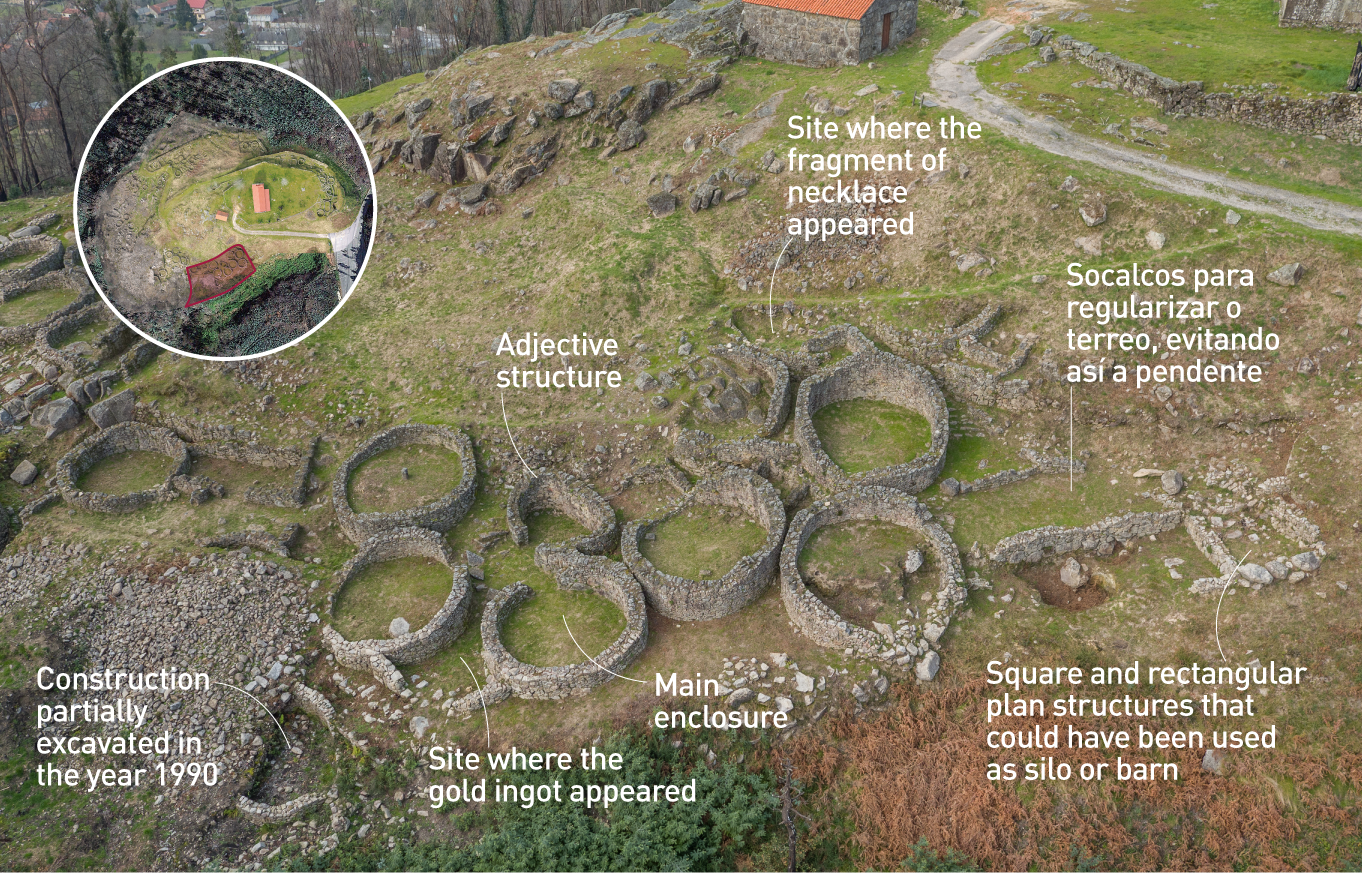

In the archaeological campaign carried out in the summer of 1991, a fragment of a rigid necklace or neck ring partially fused in gold was discovered in this section of the fort. It is not a complete piece, but a central module of a shaft that was documented on the outside of a grouping of structures of domestic character dating from the 1st century BC. This sumptuary piece appeared on a filling level next to decorated indigenous ceramics.

It is a solid rod fused in a metal to possibly produce silver or lead of almost circular section that is covered by gold plates. The neck rings were masculine jewels worn by warriors around their necks. These jewels are more common at the forts in the north of Galicia and Asturias than in the south. This example from Troña is of Ártabro style, a territory that includes the estuaries of Ferrol, Betanzos and O Burgo, and evidence that, at the time that was hidden, was considered as an amass, that is, a full economic resource, not cultural.